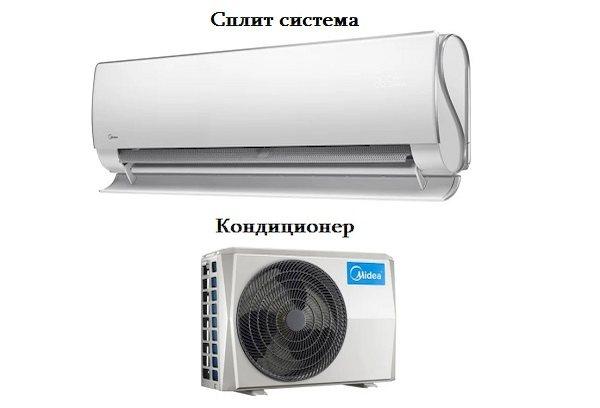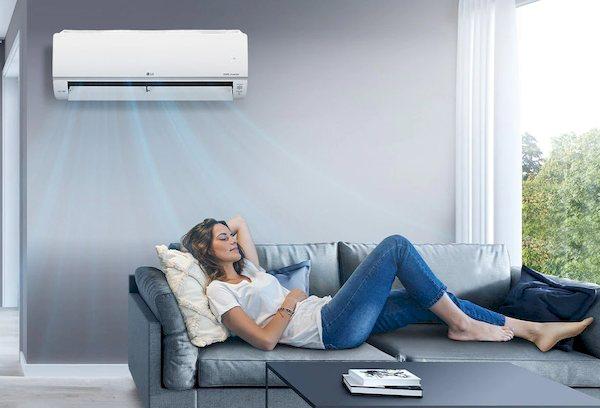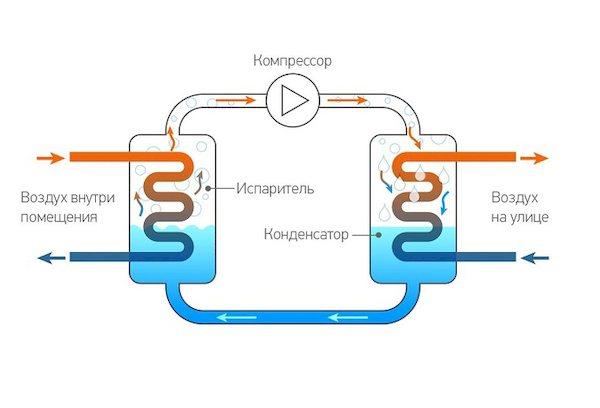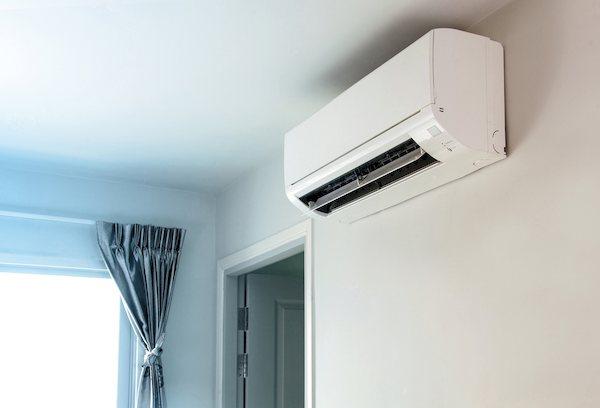What is the difference between a split system and an air conditioner: comparison in the table
Content:
For those who are confused about the terms “air conditioner” and “split system,” we offer a literal translation that explains the difference between climate control equipment. “Conditioner (air)” - “improving air”, “split” - “divided”. What is the difference between a split system and an air conditioner? The correct answer is by dividing it into two blocks: internal and external. The air conditioner can be monoblock.
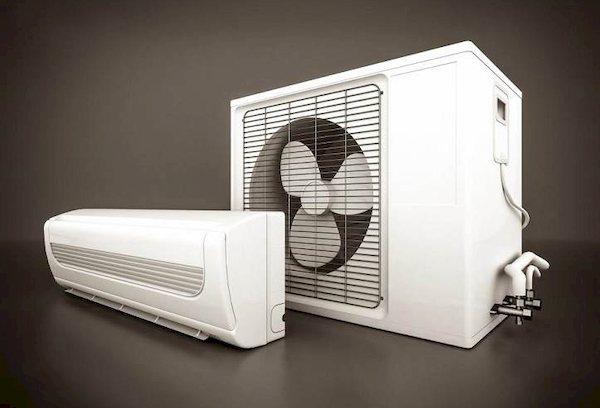
How to distinguish an air conditioner from a split system?
At its core, a split system is an air conditioner. This variety is the most popular these days. Before its spread, the “window” was in use. This is what is usually meant when they want to find out the difference between a split system and an air conditioner.
Let's note the differences in the table:
| Split system | Window air conditioner | |
| Frame | consists of 2 parts: internal and external | monoblock |
| Main purpose | creating an optimal indoor climate | air cooling in one room |
| Installed | indoor unit on any wall in the room;
external unit outside the house |
into a window opening, less often into a wall |
| Additional options: ventilation, humidity reduction, air heating | default yes;
Air ionization, control via smartphone and other functions are possible |
rarely (depending on model) |
| Indoor noise level | 24-36 dB | 41-47 dB and above |
| Price | 16,000 – 150,000 rubles | from 18,500 rub. and higher |
Difference in photo:
Air conditioning - what is it?
People first started talking about air conditioners in 1815, and the first unit appeared much later. The history of the air conditioner is intertwined with the history of the refrigerator. But first, let's look at the term.
Conditioner, or more correctly air conditdoner, is an English phrase meaning “air”, “to bring to the desired condition”.
Actually, conditioners are any “improvers”: hair products, laundry products. But let's return to air cooling devices. Contributions to the invention of the device were made by D. Perkins (“father of refrigerators”), O. Evans, J. Chabannes and D. Gorry. The last inventor created an ice-producing machine in 1845. The compressor inside compressed the air, which then passed through the coil, expanded and cooled. For a long time, air conditioning was used in gunpowder rooms and printing plants to improve print quality.
The first room air conditioner was produced by the American company General Electric in 1929. Ammonia played the role of a refrigerant in it. To avoid poisoning by fumes, the compressor and condenser were moved outside the home to the street. It was a real prototype of a split system.
Two years later, a safer refrigerant, freon, was created, and the developers thought it was a better idea to put the machine together. In the 60s of the 20th century, the Japanese added a heat pump to the machine, and the air conditioner learned not only to cool, but also to heat the air.
Most definitely, air conditioner is a general name for various types of devices, liquids and products.When talking about air conditioners installed in apartments, many people mean a split system, which is also true.
Devices are central, precision, wine. Air conditioners are classified according to the type of operation:
- supply air (work in outside air);
- recirculation (use indoor air);
- with recovery (aimed at a mixture of indoor and outdoor air).
There are also types of air conditioners:
- window;
- mobile;
- split system;
- multisplit
Window
This type of device is compact, easy to install, and affordable. Most often it has the shape of a rectangle. All elements are collected in one case. The front panel contains blinds that direct air masses and control buttons. There are holes at the back for heat dissipation. As you can guess from the name, a window air conditioner is installed in a window opening. Photo:
Mobile
The second option for a monoblock air conditioner is mobile (portable). You can take it with you to the dacha or move it from room to room. The price of the device starts from 11,000 rubles. The main disadvantage is low productivity. In addition, it is quite noisy.
What is a split system?
The production of split systems began much earlier than they became available to every person. In 1961, the Japanese company Toshiba launched mass production of air conditioners with freon, divided into two blocks. The noisiest part with the compressor was moved outside, and thus achieved the most comfortable operation of the climate control equipment. A pleasant bonus was the ability to mount the indoor unit in any convenient place.
Translated from English, “split” means “divided.”
The split indoor unit operates almost silently.It contains a heat exchanger into which cooled freon enters, a fan and an automation unit that controls many parameters. Today, the indoor unit can be mounted under a suspended ceiling (ceiling space), where it is as invisible as possible.
Multisplit
Multisplit refers to several split systems combined by one external unit. The number of internal blocks can vary from 2 to 10. This type is especially in demand for buildings of historical value, modern houses with large balconies and decorative facades. Finding space for one outdoor unit, even a large one, is much easier than finding space for 10 small ones. The disadvantage of multisystems is the very high price of the devices themselves and installation.
Question answer
What is the difference between an inverter air conditioner and a non-inverter air conditioner?
The difference lies in the ability to heat the air. In non-inverter devices, heating operates at an outside temperature of up to -7 degrees, in inverter devices - up to -30 degrees. In addition, they cool and heat rooms faster by about 30%.
Which is more economical?
To save energy, models consuming up to 500 W are recommended. It is worth paying attention to split systems from Japanese manufacturers, which most successfully combine efficiency and performance.
In conclusion, the split system is the most technologically advanced and comfortable type of air conditioner today. A climate control device can cool and heat indoor air, eliminate excess humidity, and have a number of other useful functions. At the same time, it operates almost silently, which compares favorably with monoblock air conditioners.
